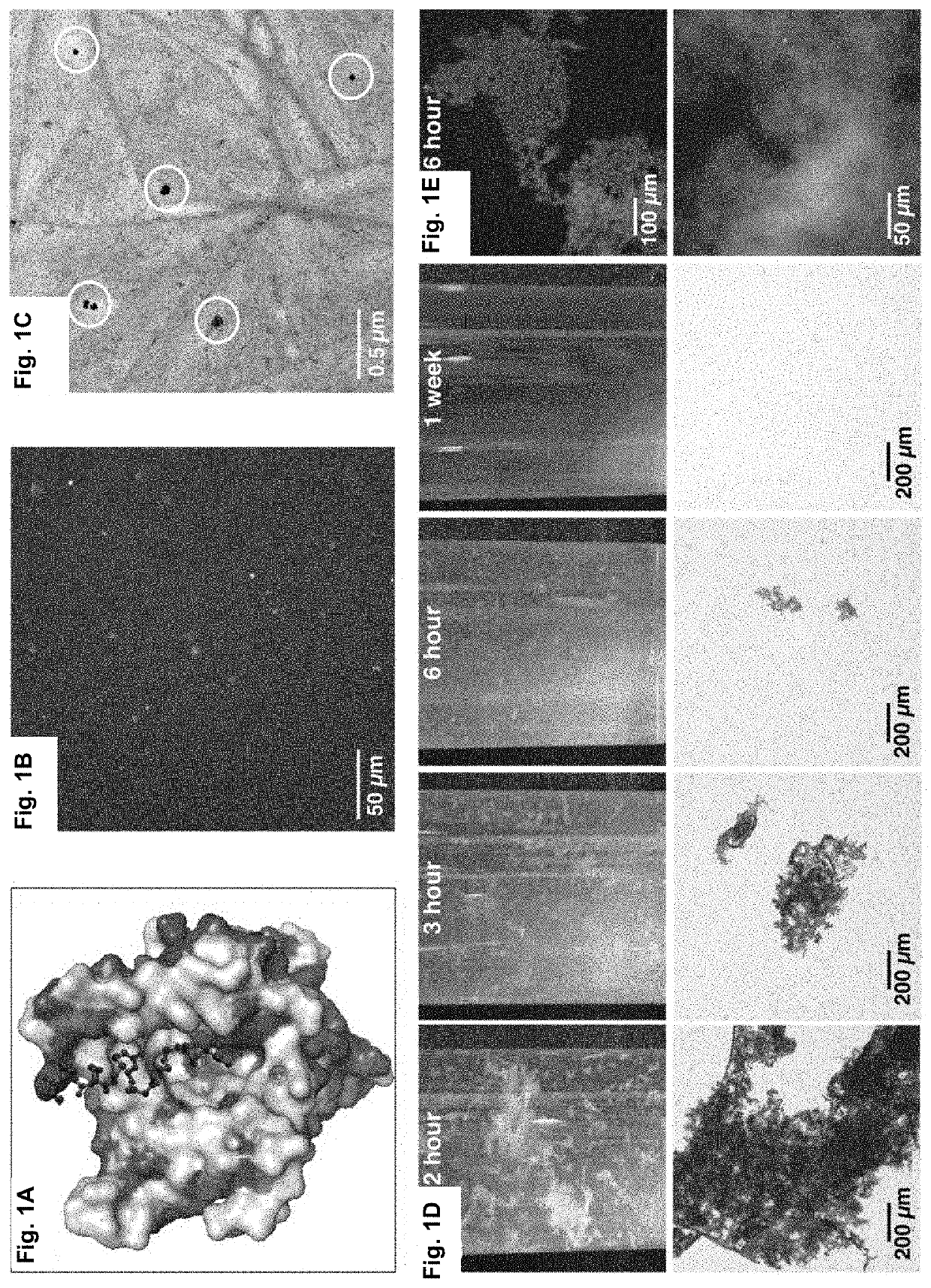Bioactive Plastics with Programmable Degradation and Microplastic Elimination
a technology of programmable plastic degradation and bioactive plastics, applied in the field of bioactive plastics with programmable degradation and microplastic elimination, can solve the problems of limited success in programmable plastic degradation, no effect in microplastic elimination, and long external degradation process
- Summary
- Abstract
- Description
- Claims
- Application Information
AI Technical Summary
Benefits of technology
Problems solved by technology
Method used
Image
Examples
Embodiment Construction
[0036]Unless contraindicated or noted otherwise, in these descriptions and throughout this specification, the terms “a” and “an” mean one or more, the term “or” means and / or. The examples and embodiments described herein are for illustrative purposes only and various modifications or changes in light thereof will be suggested to persons skilled in the art and are to be included within the spirit and purview of this application and scope of the appended claims. All publications, patents, and patent applications cited herein, including citations therein, are hereby incorporated by reference in their entirety for all purposes.
[0037]Here we show that nanoscopic enzyme dispersion in plastics can effectively eliminate microplastics without compromising polymer processing and macroscopic properties, using a random heteropolymer (RHP) approach.13,14 With enhanced enzyme availability and stabilization, the addition of a trace amount of enzyme (e.g. 0.02 wt % lipase in poly(caprolactone) (PCL...
PUM
| Property | Measurement | Unit |
|---|---|---|
| size | aaaaa | aaaaa |
| size | aaaaa | aaaaa |
| size | aaaaa | aaaaa |
Abstract
Description
Claims
Application Information
 Login to View More
Login to View More - R&D
- Intellectual Property
- Life Sciences
- Materials
- Tech Scout
- Unparalleled Data Quality
- Higher Quality Content
- 60% Fewer Hallucinations
Browse by: Latest US Patents, China's latest patents, Technical Efficacy Thesaurus, Application Domain, Technology Topic, Popular Technical Reports.
© 2025 PatSnap. All rights reserved.Legal|Privacy policy|Modern Slavery Act Transparency Statement|Sitemap|About US| Contact US: help@patsnap.com



